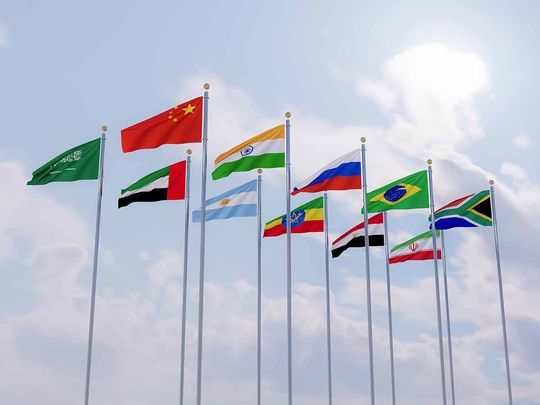
Russia last month took over the rotating (2024) annual chairmanship of BRICS — an intergovernmental alliance it helped found in 2009 with Brazil, India and China. South Africa joined a year later.
Hence BRICS. The group was designed to bring together, the world’s most important developing countries, to challenge the political and economic stranglehold of America and its European partners. The first real expansion of BRICS (Now BRICS+) with the formal inclusion of Egypt, Ethiopia, Iran, Saudi Arabia and UAE has taken place.
The expanded BRICS will represent 45 per cent of global population and shall account for about 36 per cent of global GDP in purchasing power parity (PPP) terms. The G-7 — the world’s industrialised countries in comparison, will be left with 30 per cent.
Since its transition from an investment category to a political/economic club the organisation has lived with many sceptics — almost entirely from the West, over its future and its impact.
Yet, BRICS, in 15 years of its existence has not only defied such projections but with 5 new members, is now poised to expand into a much stronger and a wealthier organisation. With 40 countries lined up for membership, the BRICS+ is now primed for a significant impact on the global economic and political scene.
Global economic balance
Each of the original member states share a profound sense of unease of the current world order. BRICS allows nations space and freedom to make non-aligned choices.
China and Russia apart, the other three members — India, Brazil and South Africa have also felt the strength of the bloc and demonstrated an independent, non-aligned foreign policy.
There is no doubt that the Bretton Woods economic system created after World War II, dominated by the US is no more relevant. Of the two main financial institutions the World Bank is headed by an American citizen. The IMF managing director is always a European but the deputy is American.
The global economic balance continues to shift towards east, but the voting weightage and the operational power still remains with the US and Europe. The institutions have not been able to adequately reform to reflect the growing economic muscle of the powers like China, Japan, Korea and the likes.
A new world order
Unable to find space within the existing structures China has indeed been instrumental in setting up the New Development Bank (NBD)-initially called BRICS Development Bank, which started its operations in 2016.
And similarly, China has also sponsored the Asia Infrastructure Investment Bank (AIIB) as an instrument for promotion of Belt and Road Initiative (BRI). Both banks are headquartered in Shanghai and had Indian bankers as the initial heads.
The NDB designed to lend money to member states to boost infrastructure demonstrates member states’ weariness with the Western sponsored financial institutions like the World Bank, IMF and others European Bank, Asian Bank. The bank around $29 billion loans for member countries in the 2017-21 period, as it now targets another $30 billion credit disbursement in 2022-2026.
All roads now lead to a new world order. It is only a matter of time.
Sajjad Ashraf served as an adjunct professor at the Lee Kuan Yew School of Public Policy, National University of Singapore from 2009 to 2017. He was a member of Pakistan Foreign Service from 1973 to 2008 and served as an ambassador to several countries.








